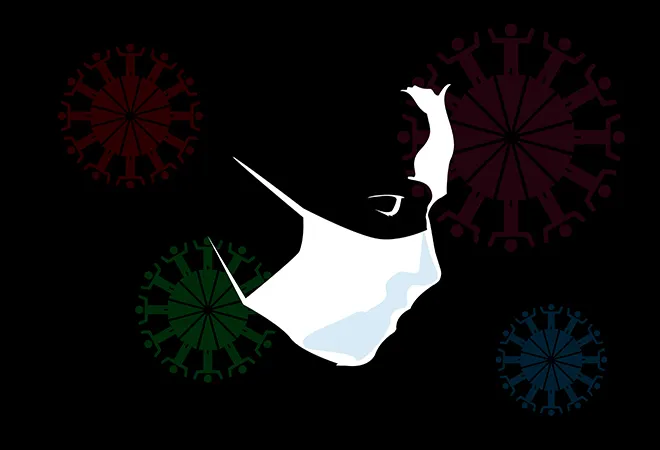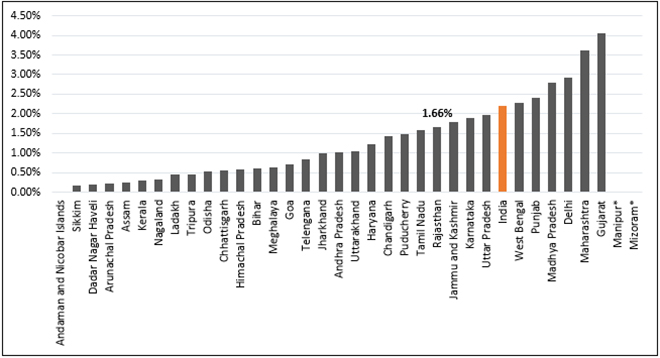
Recent evidence from the COVID-19 pandemic suggests that People Living with Noncommunicable Diseases (PLWNCDs) are at greater risk of becoming severely ill or dying from the COVID-19. Countries that have reported severe fatalities have stated higher deaths among the elderly and those having comorbidities with COVID-19.1-4 COVID-19 and NCDs seem to be a fatal combination, reinforcing one another. India is already witnessing this interaction. As of July 30, 2020, the country has the third largest number of COVID-19 cases in the world. This increasing burden of COVID-19 has exacerbated the vulnerability of PLWNCDs as many with established NCDs have inadequately managed disease.
With this context, we sought to understand the impact of COVID-19 on PLWNCDs in India and the challenges that they are facing during this pandemic due to disrupted health care services. Since very limited peer reviewed published data on the same exists for India, we reviewed information that is being generated online through credible news as well as online portals in the country. We performed a search to extract articles for India from January 2020 (India’s first COVID-19 case emergence) to May 2020, using the search terms ‘COVID and Noncommunicable diseases’, ‘COVID and Noncommunicable disease deaths’, ‘COVID and NCDs’, ‘Corona virus and Noncommunicable diseases’, ‘Corona virus and Noncommunicable disease deaths’, and ‘Corona virus and NCDs’ as part of our rapid review and were able to extract 78 relevant pieces. In addition, we also reviewed the Ministry of Health website and official twitter accounts tracking the disease in India, for obtaining useful data pertaining to NCDs and COVID-19 to supplement our search results.
India’s NCD burden and impact of COVID-19
Presently, India is dealing with double burden of communicable and NCDs, and COVID-19. This is a matter of concern given that more than 182 million people in India are suffering from NCDs. Out of the 20 countries currently most affected by the pandemic, India has reported 1.25 deaths per 100,000 population. In this group, it has the third lowest fatality per 100,000 people making it lower than the USA, UK, Brazil, France, and Italy. However, looking at state-wise data from India (Figure 1), West Bengal, Gujarat, Madhya Pradesh, Delhi, and Maharashtra have shown the worst fatality rates, higher than the national rate. However, state of Kerala, even with the highest NCD attributed deaths in the country in the past years, has shown commendable results in tackling COVID-19 and continue to exhibit best practices. While the state’s experience in handling Nipah virus cases in 2018 would have worked in its favour, it has also managed to create an effective surveillance system with focus on vulnerable populations and PLWNCDs. The state has developed a protocol for supplying medication stock for PLWNCDs and has successfully engaged their frontline health workers against COVID-19. This pro-activeness and preparedness have resulted in Kerala’s fatality rate to be as low as 0.3% despite it being the state where the first COVID-19 case was confirmed in India.
Figure 1: State-wise (India) COVID-19 fatality rate (in %) as of July 30, 2020
 * States with no fatality (Manipur and Mizoram) as on July 30, 2020
* States with no fatality (Manipur and Mizoram) as on July 30, 2020
Challenges faced by PLWNCDs during COVID-19 pandemic
Accessing essential health care has been challenging in many places in India as the public transport system has not been available for patients as well as for health-care workers to access health facilities. Few media reports and articles in scientific journals have reported reductions in essential public health and clinical interventions citing India's National Health Mission data portal, which reported data from 150,000 facilities for 704 districts. The data highlighted a reduction in availing medical treatment (including both inpatients and outpatients) and emergencies for both communicable and NCDs. It was reported that 350,000, 150,000 and 100,000 fewer people received outpatient treatment for diabetes, mental illness, and cancer treatment respectively in March 2020 as compared to March 2019. A recent rapid review by the World Health Organization also found that 30% fewer cardiac emergencies reached health facilities in rural areas of India in March 2020 compared to last year.9
Call for Action: Prioritizing control of NCDs
Given that COVID-19 is here to stay for an extended period, India needs to plan to protect PLWNCDs which may further reduce the fatality rate. Specific and updated guidelines need to be issued to address their needs. Even though NCDs are mostly preventable through healthy public policies, hitherto, health system response has largely been given prominence over health promotion. These policies should not be ignored during these times of excessive focus on health systems as public policy interventions are cost-effective. Apart from improving treatment, diagnosing NCD patients who remain undiagnosed will also need to be prioritised under revived healthy system response. Surveillance measures and digital interventions need to be developed and disseminated to fully utilize telemedicine facilities for larger and faster reach. The need for integrated health systems has been underscored in current pandemic times and we must build back better, resilient, and sustainable health systems.
The views expressed above belong to the author(s). ORF research and analyses now available on Telegram! Click here to access our curated content — blogs, longforms and interviews.




 * States with no fatality (Manipur and Mizoram) as on July 30, 2020
* States with no fatality (Manipur and Mizoram) as on July 30, 2020 PREV
PREV




